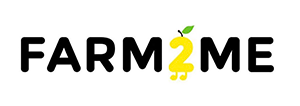when I sat down to think about who next to feature in our summer spotlight series, 250+ organic berry farms that sell the best summer berries immediately came to mind. why? because their commitment to taste, dedication to the highest non-pesticide growing practices, hard work their farmers do everyday to support the movement, crop rotations, and the the planet are what summer bounty is all about. they radiate farm2me and amplify our mission throughout their work, community events, and farm stores, that makes it look effortless, but is not, and it’s what draws us all to them — now let’s go berry picking (and not just any berries — the best of summer, organic berries) . lwe can do all the research and sourcing to find new emerging products, but the only way to really appreciate this movement is to visit the farms, and networks of farm stores, to test sustainability practices and show us how practical this movement is. they also carry emerging brands they find through our wholesale marketplace and social channels IRL. and there is nothing better than spending a day on the farm, grabbing a drink, having a meal, and supporting local businesses in the countryside! #bratsummer
born out of a love for local food systems, transparency, innovation, and accessibility, these farmers have amassed a hyper quality product, and a devoted following on instagram thanks to their affordable, open, and enormous passion for the movement. their focus on education, seasonality, hyper local sourcing, diverse berry varietals & quality, is constantly pushing the limits year after year, and their farms feature the perfect balance of activities, live music, local CPG products, artists, and regional dishes that complement their mission.
Seeking out certified organic, soil-grown berries is an investment in farmers who are supporting human health and your local ecosystem. Use our interactive map to find certified organic farms that are bringing nutrient packed, soil-grown berries to your area. i know you'll love this organic berry map guide as much as i do.
Farm2Me Map of Organic Berry Farms is not just a map – it’s a vibrant, living community celebrating the hardworking farm stores and farmers you never see in grocery stores, when you go shopping everyday.
Get lost in the intricate stories of farm families. Discover their journeys, the berries they grow, and the reasons behind what they do.
Take advantage of the map when you’re visiting a new neighborhood, when you’re traveling around the country / world this weekend, or just looking for something special to do with your family.
We’ve spent 14 years building this, so enjoy!
It’s no secret that investors love strong returns.
That’s why 250,000 people use Vinovest to invest in fine whiskey.
Whiskey has consistently matured and delivered noteworthy exits. With the most recent exit at 30.7%, Vinovest’s track record supports whiskey’s value growth across categories such as Bourbon, Scotch, and Irish whiskey.
With Vinovest’s strategic approach to sourcing and market analysis, you get access to optimal acquisition costs and profitable exits.
Decentralization of Big Food
Big Food is ConAgra (a monopoly of Grocery & Agriculture) and they control nearly 99.5% of the food you eat – regardless of what supermarket you shop.
Earlier this month, we explored how lackluster total shareholder returns (TSRs) can force transformational change in Expect Big Change in Big Food. Now we explore some historical context and the corporate strategy megatrend we believe guides board-level decision-making. General Mills and Conagra reported quarterly earnings a few weeks ago. The big takeaway was that consumers remain in a Big Food coma after 2-3 years of multi-decade-high COVID-driven “at-home” consumption growth. Consumers are now pushing back on price increases, and retailers are investing more in their private label programs. Big Food is back to losing market share again following its short-lived outperformance during the pandemic. Predictably, these factors are forcing Big Food companies to promote and advertise more heavily this summer to improve consumer receptivity to their flagship brands ahead of the Back-to-School season.
However, we believe the COVID era will likely prove a temporary distraction from the corporate strategy megatrend that had been guiding these companies’ actions before this black swan event. In the years and decades before the pandemic, most Big Food companies had been hard at work whittling their portfolios into leaner, more agile, mega/category-specific businesses. This "Great De-Conglomeration" involved unwinding what corporate conglomeration had done to the food sector 50+ years ago. The conglomerate era of the 1950-1970s favored the creation of large diversified "holding" or "portfolio" companies, under the theory that owning multiple uncorrelated cash flow streams would generate steadier, more predictable returns for shareholders through economic cycles. However, the increased complexity and management hubris ultimately led to relatively lackluster organic TSRs and value-destructive M&A, prompting a shift towards decentralization.
In Big Food and Big CPG broadly, decentralization remains an ongoing process. General Mills and Conagra offer interesting examples of this trend, having diversified their portfolios extensively before focusing back on core operations. For instance, General Mills divested its toys and fashion units, and in recent years expanded into pet food with acquisitions of Blue Buffalo and others. Conagra shed most of its non-core assets and reoriented towards a brand- and marketing-oriented CPG company. Despite years of simplification, challenges remain, as seen with Conagra's $100 million lawsuit related to lead paint liabilities. The big strategy question for Big Food is where diversification starts and ends now, as managing large portfolios of brands and business units across disparate categories and channels remains complex. This ongoing process highlights the necessity for Big Food to focus on fewer, bigger things to stay competitive in an evolving market.
Whiskey Investing: Consistent Returns with Vinovest
It’s no secret that investors love strong returns.
That’s why 250,000 people use Vinovest to invest in fine whiskey.
Whiskey has consistently matured and delivered noteworthy exits. With the most recent exit at 30.7%, Vinovest’s track record supports whiskey’s value growth across categories such as Bourbon, Scotch, and Irish whiskey.
With Vinovest’s strategic approach to sourcing and market analysis, you get access to optimal acquisition costs and profitable exits.
THAT’S A WRAP
Stay Cute,
Garry & The Farm2Me Team 🌈
P.S if you enjoyed this , forward it to a friend.
If you’re that friend, subscribe here






